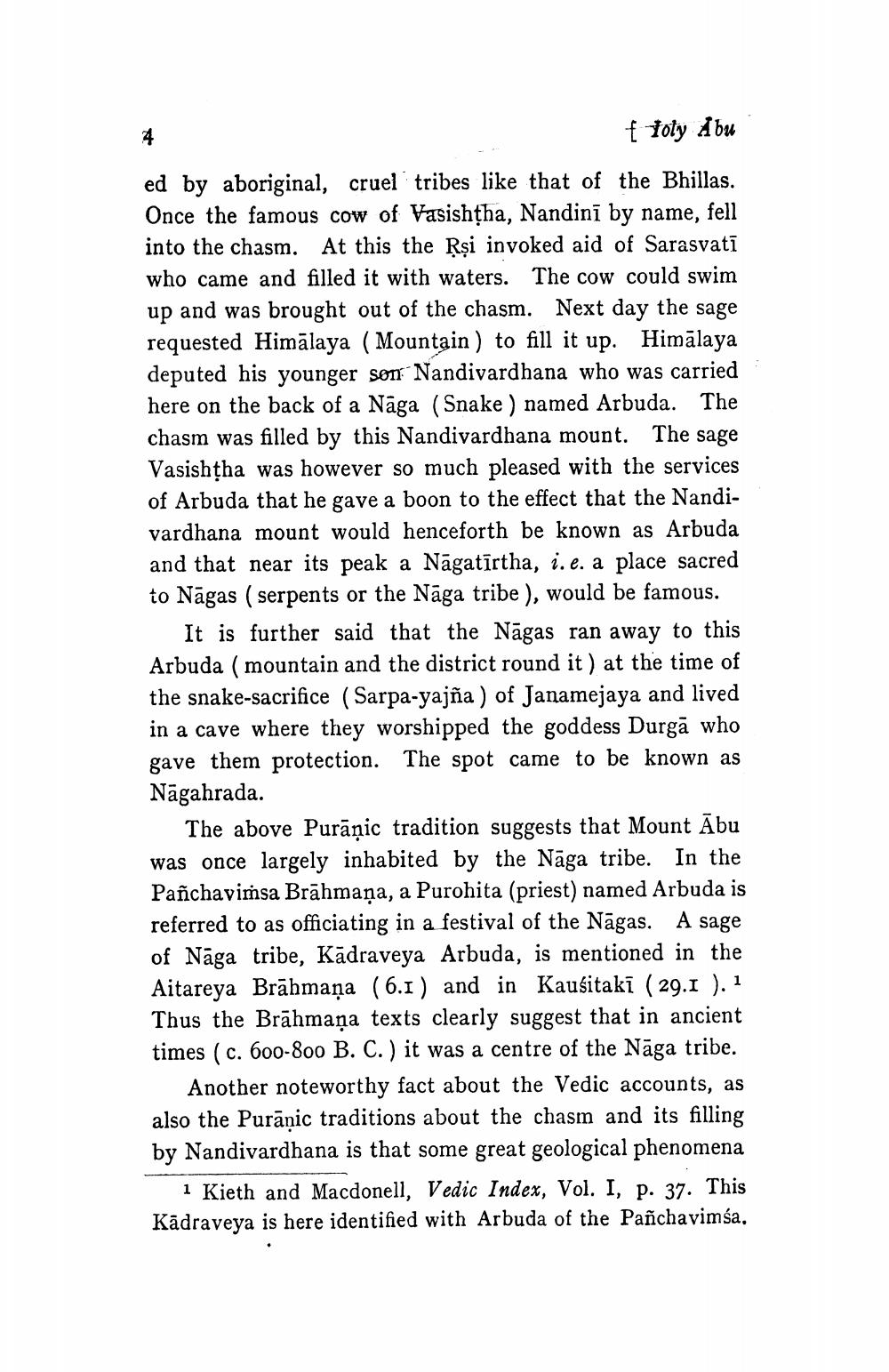________________
f toty Abu ed by aboriginal, cruel tribes like that of the Bhillas. Once the famous cow of Vasishtha, Nandinī by name, fell into the chasm. At this the Řși invoked aid of Sarasvatī who came and filled it with waters. The cow could swim up and was brought out of the chasm. Next day the sage requested Himālaya ( Mountain) to fill it up. Himālaya deputed his younger son Nandivardhana who was carried here on the back of a Nāga (Snake ) named Arbuda. The chasm was filled by this Nandivardhana mount. The sage Vasishtha was however so much pleased with the services of Arbuda that he gave a boon to the effect that the Nandivardhana mount would henceforth be known as Arbuda and that near its peak a Nāgatīrtha, i.e. a place sacred to Nāgas ( serpents or the Nāga tribe ), would be famous.
It is further said that the Nāgas ran away to this Arbuda ( mountain and the district round it) at the time of the snake-sacrifice (Sarpa-yajña) of Janamejaya and lived in a cave where they worshipped the goddess Durgā who gave them protection. The spot came to be known as Nāgahrada.
The above Purāņic tradition suggests that Mount Abu was once largely inhabited by the Nāga tribe. In the Pañchavissa Brāhmaṇa, a Purohita (priest) named Arbuda is referred to as officiating in a festival of the Nāgas. A sage of Nāga tribe, Kādraveya Arbuda, is mentioned in the Aitareya Brāhmaṇa (6.1) and in Kausitakī (29.1 ). 1 Thus the Brāhmaṇa texts clearly suggest that in ancient times (c. 600-800 B. C. ) it was a centre of the Nāga tribe.
Another noteworthy fact about the Vedic accounts, as also the Purāņic traditions about the chasm and its filling by Nandivardhana is that some great geological phenomena
1 Kieth and Macdonell, Vedic Index, Vol. I, p. 37. This Kādraveya is here identified with Arbuda of the Pañchavimśa.




